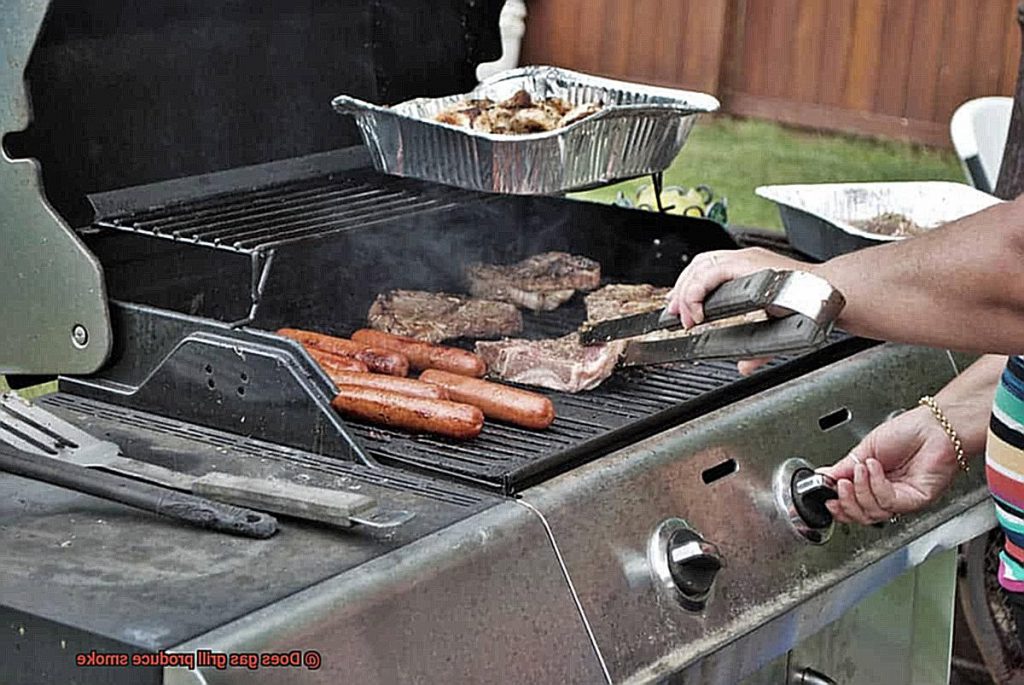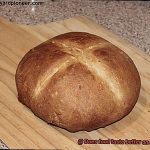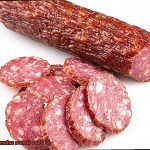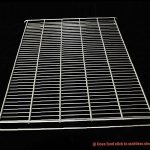Are you in the market for a new grill and wondering if a gas grill can produce the same smoky flavor as traditional charcoal or wood-fired grills? You’re not alone. Many people swear by the unique taste that comes from cooking over an open flame, but is it possible to get that same smoky flavor without using traditional fuels?
The answer is yes, gas grills can indeed produce smoke. Most modern gas grills come equipped with a smoke box or tray, allowing you to add wood chips or other flavorful additions to your cooking. But that’s not the only way to achieve that delicious smokiness.
Several factors contribute to the amount of smoke your gas grill produces, such as the type of cooking surface and temperature. By understanding these factors and adjusting your grilling technique accordingly, you can create mouth-watering dishes that will wow your guests.
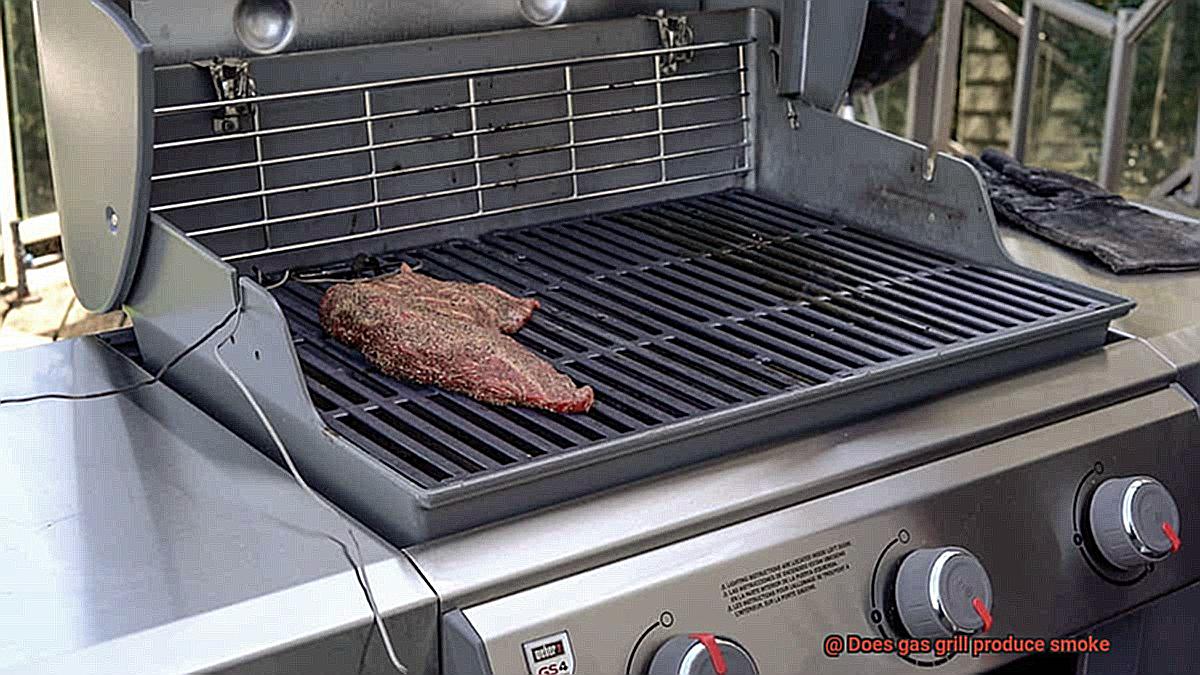
But don’t just take our word for it; let’s dive into the science behind producing smoke on a gas grill. We’ll explore different methods for adding smoky flavor to your cooking and share tips and tricks to help you get the most out of your gas grill. So grab your apron, fire up the grill, and let’s get started.
Contents
The Smoke Produced by Gas Grills
While gas grills produce less visible smoke than their counterparts, they do still produce smoke that can add flavor to your food. Let’s explore the type of smoke produced by gas grills and how it differs from other grilling methods.
Gas grills use propane or natural gas as fuel, which burns cleaner than charcoal or wood. As a result, the smoke produced by gas grills is usually thin and blue in color, and it’s not as flavorful or aromatic as the smoke produced by charcoal or wood-fired grills. However, the smoke from gas grills still adds some flavor to your food, especially when juices and fats drip onto the hot metal surface.
But there’s more to the story. The amount and type of smoke that a gas grill produces depends on several factors. Here are some of them:
Fuel Type:
Gas grills use propane or natural gas as their fuel source, which burns cleaner than charcoal or wood. As a result, gas grills produce less visible smoke than their charcoal or wood counterparts.
Temperature:
Higher temperatures tend to produce more smoke, as the fat and juices from the food being cooked vaporize more rapidly. Therefore, cooking at a lower temperature on a gas grill will produce less smoke than cooking at a higher temperature.
Drip Tray:
Gas grills have a drip tray that collects fat and juices from the food being cooked. When these liquids drip onto the heat source, they create smoke that adds flavor to the food.
To enhance the smoky flavor of your gas-grilled foods, there are a few things you can do. First, try cooking at a lower temperature on your gas grill. This will allow more time for the smoke to penetrate the food and add flavor. Second, consider using wood chips or chunks in a smoker box or tray on your gas grill. This will add more smoke to your food and increase its flavor and aroma.
Factors Affecting the Amount and Quality of Smoke Produced by Gas Grills
While gas grills may not produce as much smoke as charcoal or wood grills, there are some key factors to consider that can help you achieve that delicious smoky flavor. Here’s what you need to know about the factors that affect the amount and quality of smoke produced by gas grills:
Firstly, the type of wood chips you use can make all the difference. Different types of wood chips produce different flavors and amounts of smoke. For instance, hickory wood chips produce a strong, bold flavor and a lot of smoke, while applewood chips produce a milder, sweeter flavor and less smoke. Therefore, it’s essential to choose the right type of wood chips for your dish based on the flavor profile you want to achieve.
Secondly, the temperature you set your gas grill at plays a crucial role in producing smoke. If the temperature is too low, the wood chips may not produce enough smoke, resulting in less flavor in your food. Conversely, if the temperature is too high, the wood chips may burn too quickly, leading to a bitter taste. Therefore, finding that delicate balance where the temperature is just right is essential for getting that perfect smoky flavor.
Thirdly, the placement of your wood chips also affects how much smoke is produced. Placing your wood chips directly on the heat source will cause them to burn quickly and create a lot of smoke initially. However, this will quickly dissipate, resulting in less overall smoke. On the other hand, placing your wood chips in a smoker box or foil packet will create a slower and more consistent release of smoke.
Lastly, it’s important to consider the type and quality of food being grilled. Foods that are high in fat or have a lot of surface area will absorb more smoke and have a stronger smoky flavor. Therefore, choosing foods like ribs, brisket, or salmon can help you infuse your dish with that delicious smoky taste.
Types of Fuel Used in Gas Grills
The fuel type used in gas grills can affect the amount and quality of smoke produced during cooking. Here are five sub-sections explaining the types of fuel used in gas grills and how they affect smoke production:
Propane vs. Natural Gas
The two primary fuels used in gas grills are propane and natural gas. Propane is a liquid petroleum gas that is stored in portable tanks, while natural gas is a fossil fuel supplied through pipelines directly to homes. Propane is more popular due to its portability and faster cooking times, while natural gas is a cost-effective and environmentally friendly option.
Smoke Production
Unlike charcoal or wood-fired grills, neither propane nor natural gas produce smoke when burned since the combustion process is complete, leaving no residue behind. However, some smoke may still be produced when cooking food drips onto hot grill surfaces, causing vaporization.
Drippings
Drippings from the food being cooked can fall onto the grill surface, causing vaporization and smoke production. You can minimize this by using drip pans or cleaning the grill regularly.
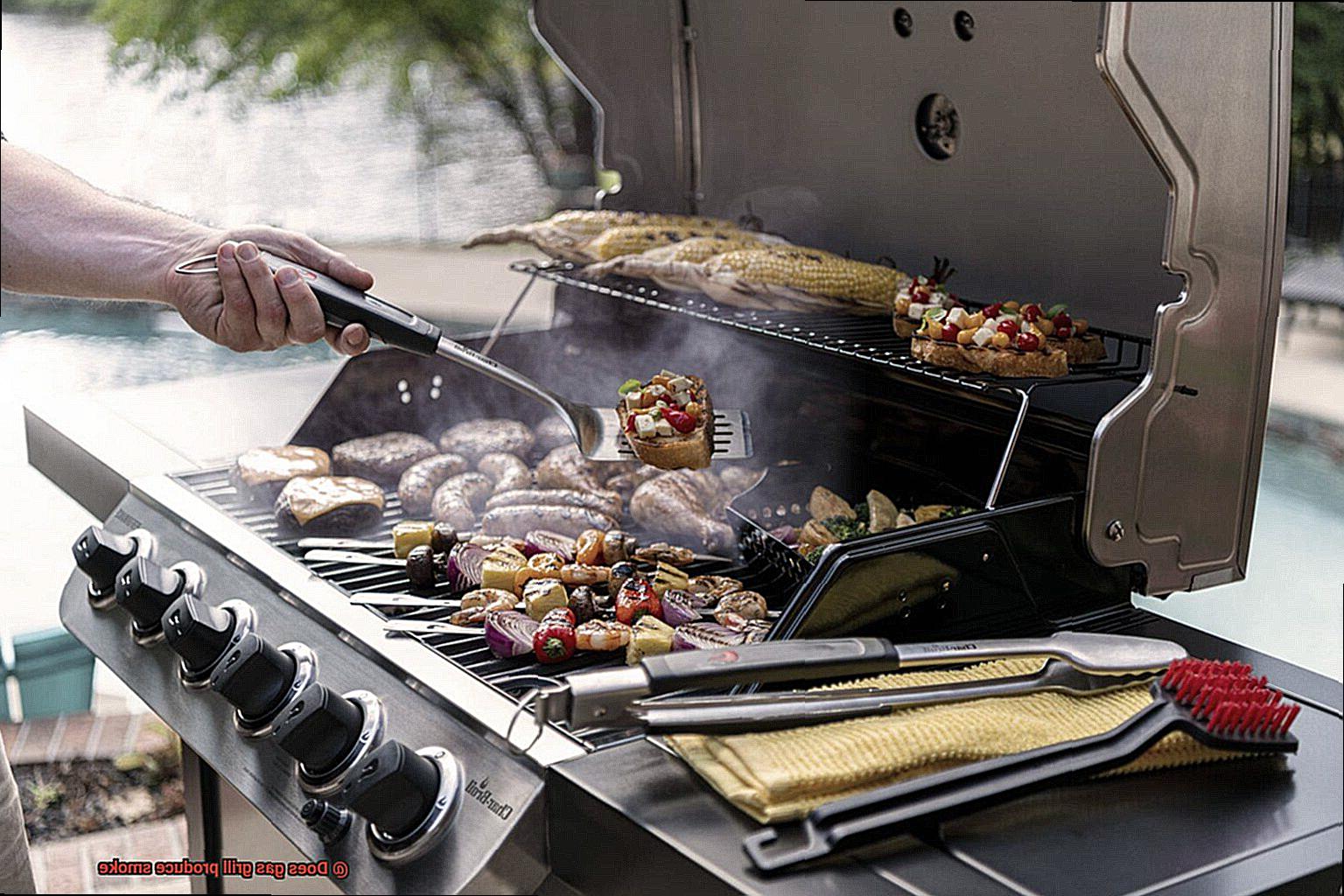
Smoking Boxes
Some gas grills come with smoker boxes or trays that allow wood chips to be added to enhance smoke flavor. However, this method produces minimal smoke compared to traditional charcoal or wood-fired grilling.
Cooking Method
The cooking method used can also affect smoke production. High-temperature grilling for short periods tends to produce less smoke than low-and-slow cooking methods like smoking or roasting, which allows more time for the smoke to penetrate the food and add flavor.
How Gas Grills Work
First and foremost, gas grills work by using propane or natural gas as a fuel source to create heat. This heat is then used to cook your food to perfection. Unlike charcoal grills, gas grills don’t involve burning wood or charcoal, which means they produce significantly less smoke. This results in a cleaner and more efficient cooking experience that’s hard to beat.
But what about flavor? While some argue that charcoal grills produce a smokier flavor, gas grills can produce smoke too, just in a different way. When food drips onto the hot grill surface, it can vaporize and create smoke. However, the amount of smoke produced depends on the fuel type used and the cooking method.
Propane is a popular choice for gas grills due to its portability and faster cooking times. Natural gas is another option that’s cost-effective and environmentally friendly. Plus, natural gas doesn’t produce smoke unless there are drippings involved.
The cooking grates on gas grills are heated by burners located beneath them, which produce a consistent and even heat. This heat is then reflected back onto the food, cooking it from all sides. Some models even come with a smoker box or smoke tray for adding wood chips and infusing your food with that delicious smoky flavor.
In summary, gas grills offer numerous benefits for outdoor cooking. They may not produce as much smoke as charcoal grills, but they still offer a delicious result with less mess and hassle. Here are some additional reasons why you should consider using a gas grill:
- Gas grills are easy to start up and typically reach cooking temperature quickly.
- They can be easier to clean than charcoal grills since there’s no ash to dispose of.
- You can control the temperature more easily with a gas grill, making it easier to cook delicate items like fish without overcooking them.
The Difference Between Charcoal and Wood-Fired Grills and Gas Grills
The first step is deciding which type of grill to choose – charcoal and wood-fired grills or gas grills. These two options differ in several ways, but the most significant difference is the amount of smoke produced.
Charcoal and wood-fired grills are known for producing a lot of smoke due to the nature of their fuel source. In contrast, gas grills use propane or natural gas, which burn cleaner and produce less smoke and fewer harmful emissions. This makes gas grills a more environmentally-friendly and convenient option for those who want to avoid the fuss of traditional grilling methods.
However, if you’re someone who loves the distinct smoky flavor that charcoal and wood-fired grills provide, then these traditional grilling methods may be your best bet. The smoky flavor profile can be hard to replicate with gas grills. But if you find the smoky flavor too strong or overpowering, then gas grills offer a more subtle alternative that allows the natural flavors of the food to shine through.
Another factor to consider is ease of use and maintenance. Gas grills are generally much easier to clean and maintain than charcoal or wood-fired grills. They don’t require as much attention and monitoring, and there’s no need to dispose of ashes or spent fuel.
Enhancing the Flavor and Aroma of the Smoke from a Gas Grill
As an expert in the matter, I have some tips to help enhance the flavor and aroma of the smoke when cooking on a gas grill.
Firstly, let’s talk about wood chips or chunks. Soaking the wood chips in water for at least 30 minutes before using them can help create more smoke. Once ready, they can be placed in a smoker box or wrapped in foil with holes poked in it. The smoker box or foil packet can then be placed on the grill grates next to the food. This method allows for the wood to slowly release smoke, giving your food that delicious smoky flavor. For an even stronger smoke flavor, try using wood chunks instead of chips.
But why stop there? Another way to enhance the smoke flavor is by using a smoking tube. A smoking tube is a small metal tube that is filled with wood pellets or sawdust and placed on the grill grates. The tube can be lit with a torch or lighter, and it will start producing smoke within minutes. This method is perfect for those who want to add extra flavor without having to deal with the mess of wood chips or chunks. Some popular woods to use in smoking tubes include applewood, hickory, and mesquite.
Marinating your meat in a flavorful marinade or rub can also enhance the taste and aroma of the food. Adding herbs like rosemary, thyme, or sage to the marinade or rub can provide additional flavors that complement the smoke. This method not only adds flavor but also tenderizes the meat, making it even more delicious.
Cooking Methods That Affect Smoke Production from a Gas Grill
As a grill master, you know that nothing beats the smoky flavor of grilled dishes. But did you know that you can achieve that same flavor on a gas grill? By understanding the cooking methods that affect smoke production from your gas grill, you can unlock the secret to enhancing the flavor of your grilled dishes.
One crucial factor that affects smoke production is the type of wood chips used. Different types of wood chips produce varying levels of smoke and flavors. Mesquite wood chips give off a strong, smoky flavor, while fruitwood chips, such as apple or cherry, produce a milder, fruitier flavor. Choosing the right type of wood chips for your food is essential to avoid overpowering or underwhelming flavors.
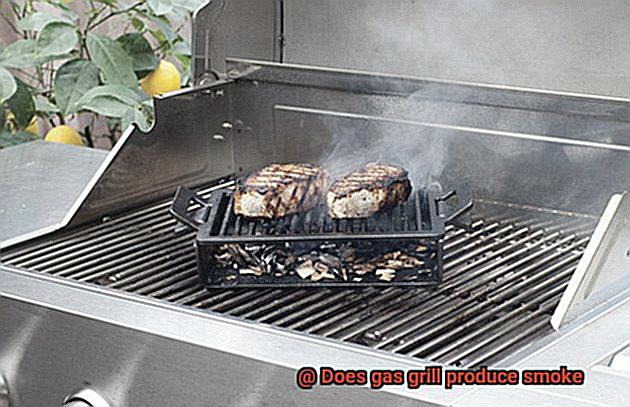
Another important factor is temperature. Lower temperatures tend to produce more smoke, while higher temperatures reduce the amount of smoke produced. Cooking at a lower temperature for an extended period allows for more time for smoke to infuse into the food, enhancing its flavor. In contrast, higher temperatures can sear the meat quickly, reducing smoke production but still providing a flavorful crust.
Controlling the airflow inside your grill also plays a vital role in smoke production. Closing the vents reduces oxygen flow inside the grill, leading to less intense flames and less smoke production. On the other hand, opening the vents increases oxygen flow and intensifies flames, which can lead to more smoke production.
To sum up, by understanding how wood chips, temperature, and airflow affect smoke production from your gas grill, you can control and adjust the amount and quality of smoke produced. Here’s a quick rundown of our tips:
- Choose the right type of wood chips for your food
- Cook at lower temperatures for longer periods to enhance smoky flavor
- Control airflow by adjusting your grill’s vents
Tips for Getting the Most Out of Your Gas Grill
Gas grills are a popular choice for outdoor cooking because of their convenience and quick heating abilities. However, many people wonder if gas grills can produce the same amount of smoke and flavor as charcoal or wood-fired grills. The answer is yes, but you need to follow some tips to achieve that smoky flavor.
Soak Wood Chips or Chunks
Soak your wood chips or chunks in water for at least 30 minutes before placing them on the grill. This will help the wood produce more smoke and enhance the flavor of your food. You can also place them in a smoker box or wrap them in aluminum foil with holes poked in it to allow smoke to escape.
Keep the Lid Closed
Keeping the lid closed during cooking helps trap the smoke inside the grill, which infuses your food with more smoky flavor. It also helps regulate the temperature and ensures even cooking.
Use a Marinade or Rub
Using a marinade or rub can add more depth and smokiness to your food. The sugars and spices in these mixtures can caramelize and create a smoky flavor when exposed to heat.
Adjust Your Burners
Adjusting your burners to create indirect heat allows your food to cook more evenly and slowly, resulting in a smokier flavor. This is especially useful for larger cuts of meat like brisket or pork shoulder.
Clean Your Grill Regularly
A buildup of grease and food residue can prevent smoke from penetrating your food and create a burnt taste instead. Make sure to clean your grill thoroughly before each use to prevent this from happening.
Use a Smoker Box
Investing in a smoker box for your gas grill is another great way to add more smoke and flavor to your food. This accessory allows you to add wood chips or smoking pellets directly onto the grill grates, producing more smoke and enhancing the flavor of your food.
TOIK-BEY8PI” >
Conclusion
In conclusion, gas grills can indeed produce smoke that adds a delicious, smoky flavor to your food. While gas grills may not produce as much visible smoke as charcoal or wood-fired grills, the amount and type of smoke produced depend on various factors such as fuel type, temperature, and wood chip placement.
To elevate the smoky taste of your gas-grilled dishes, there are several tricks you can use. Soaking wood chips in water before use creates more smoke, while using a smoker box or foil packet releases smoke slowly and consistently. Adjusting the vents inside your grill also plays a crucial role in controlling airflow for optimal smoke production.
Gas grills offer numerous benefits for outdoor cooking, including easier maintenance and cleaning than charcoal or wood-fired alternatives. With these tips in mind, you can achieve mouth-watering dishes with less mess and hassle on your gas grill.
So next time someone asks if gas grills produce smoke, you can confidently say yes.

